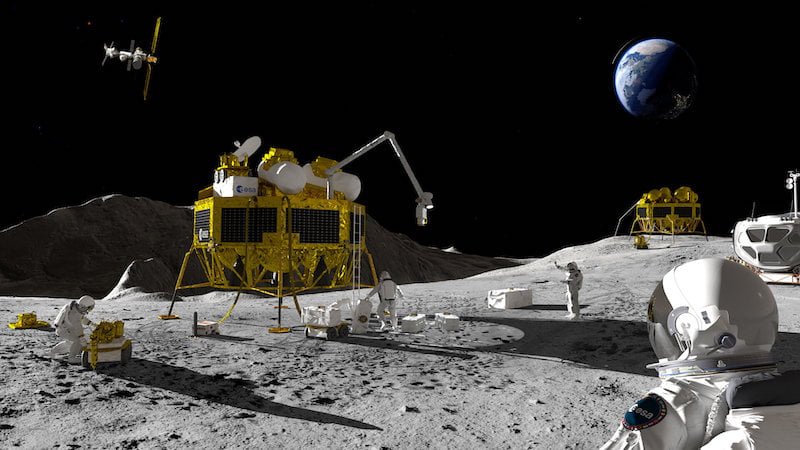
Researchers from the European Space Agency (ESA) have developed a battery made from nuclear waste that could provide heat and electricity to potential lunar colonies in the future. The basis for this is the element americium-241.
What will life look like in the future? Will we continue to live on earth and face the consequences of our way of life? Or will we soon be exploring other planets and pushing ahead with colonies on the Moon and Mars? Before that happens, however, there are still a few challenges to overcome.
Despite this, and perhaps because of this, the European Space Agency (ESA) is taking exactly this direction. ESA wants to develop generators that generate heat and electricity on the moon by the time of a moon mission in the 2030s.
The basis is the radioactive element Americium-241. Because nuclear power is still an essential part of the power supply on foreign planets.
Battery made from nuclear waste to bring electricity and heat into space
The reason seems simple, that energy from solar panels is not necessarily available. Until now, ESA has used plutonium-238 as the basis for its radioactive batteries, but this is changing. The reason is the previous dependence on Russia and America. With the invasion of Ukraine, the Russian side is no longer a possible partner.
So an alternative was needed. Plutonium-238 has continued to rise in price in recent years. The choice therefore fell on Americium-241. This is about a fifth as expensive and comes from the waste from nuclear power plants. So in the future, batteries made from nuclear waste could provide energy and heat on alien planets.
Further tests are necessary before productive use
A coating of several platinum layers provides the necessary security. These prevent radioactivity from escaping, but at the same time allow heat to be generated. Before the battery is ready to start, however, there are still safety tests to be carried out.
Because the battery must still be safe even when exposed to high temperatures and strong impacts. The next ten years may show whether the technology can develop its full potential.
Also interesting:
Source: https://www.basicthinking.de/blog/2022/12/15/batterie-aus-atommuell/


